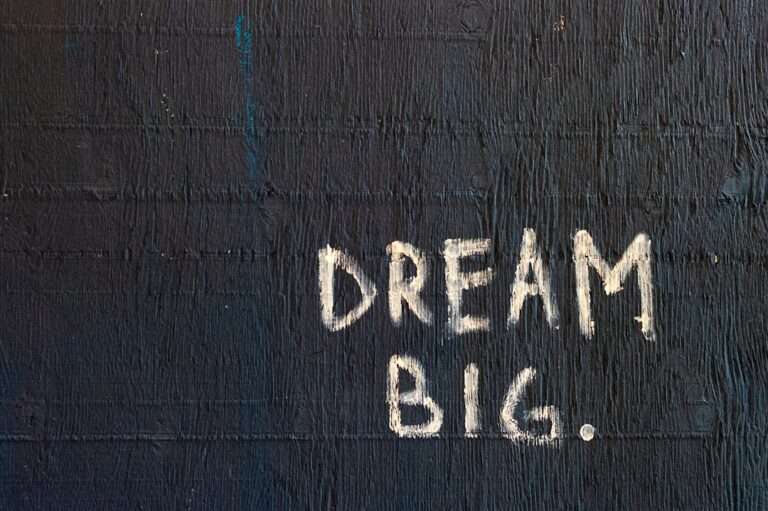Unlocking the Power of Dreams and Symbols: A Guide to Finding Meaning in Times of Distress
Dreams have long been a source of fascination and intrigue for humans. They have been the subject of countless studies, theories, and interpretations throughout history. Dreams are not only a reflection of our subconscious mind, but they also hold the potential for psychological healing and personal growth. Symbols, which often appear in dreams, can provide valuable insights into our emotions, beliefs, and experiences. By understanding and interpreting these symbols, we can gain a deeper understanding of ourselves and address emotional and psychological issues.
The Importance of Dreams and Symbols in Psychological Healing
Dreams are a window into the unconscious mind. They allow us to access thoughts, feelings, and memories that may be hidden from our conscious awareness. Dreams often contain symbols that represent deeper meanings and emotions. These symbols can provide valuable insights into our psychological well-being and help us address unresolved issues.
For example, a common dream symbol is water. Water often represents emotions and the unconscious mind. If someone has a dream about drowning in water, it may indicate that they are feeling overwhelmed by their emotions or that they are struggling to cope with a particular situation in their life. By recognizing and interpreting this symbol, the individual can begin to address their emotional state and find ways to cope with their feelings.
Understanding the Language of Dreams: A Beginner’s Guide
Understanding the language of dreams can be a complex task, but with practice and awareness, it becomes easier to interpret their meanings. There are many common dream symbols that have universal meanings. For example, flying often represents freedom or a desire for independence, while falling can symbolize a loss of control or fear of failure.
It is important to remember that dream symbols can have different meanings for different individuals. While there are some universal symbols, personal experiences and cultural backgrounds can influence the interpretation of symbols in dreams. It is essential to consider the context of the dream and the individual’s personal associations with certain symbols.
How to Interpret Symbols and Their Significance in Your Life
| Symbol | Meaning | Significance |
|---|---|---|
| Butterfly | Transformation, growth, and change | Encourages you to embrace change and trust the journey of life |
| Feather | Freedom, spirituality, and communication with the divine | Reminds you to connect with your spiritual side and trust your intuition |
| Heart | Love, compassion, and emotional well-being | Encourages you to open your heart to love and practice self-care |
| Lotus | Purity, enlightenment, and spiritual awakening | Reminds you to stay grounded and seek inner peace and clarity |
| Tree | Growth, stability, and grounding | Encourages you to stay rooted in your values and beliefs while growing and evolving |
Symbols can be powerful tools for gaining insight into personal beliefs and emotions. By interpreting symbols and understanding their significance in daily life, individuals can gain a deeper understanding of themselves and their experiences.
One technique for interpreting symbols is to explore the emotions and associations that arise when encountering a particular symbol. For example, if someone has a dream about a snake, they may feel fear or anxiety. This could indicate that they have unresolved fears or anxieties in their waking life that need to be addressed.
Another technique is to consider the context of the symbol in the dream. For example, if someone dreams about a house, they may want to consider what the house represents to them personally. Is it a place of comfort and security, or does it represent feelings of confinement or restriction? By exploring these associations, individuals can gain a deeper understanding of the symbol’s significance in their life.
The Role of Dreams and Symbols in Coping with Trauma and Grief
Dreams and symbols can play a crucial role in processing and coping with traumatic experiences. Trauma often leaves a lasting impact on the psyche, and dreams can provide a safe space for the mind to process and heal from these experiences.
Dreams can allow individuals to confront and work through their emotions in a controlled environment. For example, someone who has experienced a car accident may have recurring dreams about being in a car crash. These dreams can provide an opportunity for the individual to process their fears and anxieties related to the accident.
Symbols in dreams can also provide comfort and healing during times of grief. For example, dreaming about a deceased loved one can be a way for the mind to process the loss and find solace. These dreams can provide a sense of connection and closure that may not be possible in waking life.
Techniques for Enhancing Dream Recall and Interpretation

Improving dream recall and remembering important details is essential for effective dream interpretation. There are several techniques that can help enhance dream recall and improve the ability to interpret dreams.
One technique is to keep a dream journal. By writing down dreams immediately upon waking, individuals can capture important details and emotions that may be forgotten later in the day. This practice also helps to train the mind to pay closer attention to dreams and increases overall dream recall.
Another technique is to create a bedtime routine that promotes relaxation and mindfulness. Engaging in activities such as meditation or journaling before bed can help calm the mind and increase the likelihood of having vivid and memorable dreams.
Using Dreamwork to Uncover Hidden Emotions and Beliefs
Dreamwork is a powerful tool for uncovering unconscious emotions and beliefs. By exploring the symbols and themes in dreams, individuals can gain insight into their deepest desires, fears, and motivations.
One technique for exploring hidden emotions and beliefs is to engage in active imagination. This involves revisiting a dream or symbol in a waking state and allowing the mind to freely associate with it. By exploring the emotions and thoughts that arise, individuals can gain a deeper understanding of their unconscious mind.
Another technique is to engage in dialogue with dream characters or symbols. This can be done through journaling or visualization exercises. By engaging in conversation with these symbols, individuals can gain insight into their own thoughts and beliefs.
The Benefits of Keeping a Dream Journal and Analyzing Patterns
Keeping a dream journal can be a valuable tool for identifying patterns and recurring themes in dreams. By analyzing these patterns, individuals can gain insight into their personal growth and development.
A dream journal allows individuals to track their dreams over time and identify common symbols or themes that appear. For example, someone may notice that they frequently dream about being chased or pursued. This recurring theme may indicate underlying feelings of anxiety or a need for escape in their waking life.
Analyzing these patterns can provide valuable insights into personal growth and development. By recognizing recurring themes or symbols, individuals can identify areas of their life that may need attention or change. This awareness can lead to personal growth and a deeper understanding of oneself.
Harnessing the Power of Symbolism for Personal Growth and Transformation
Symbolism can be a powerful tool for promoting personal growth and transformation. By using symbols intentionally, individuals can align their actions and beliefs with their desired goals and aspirations.
One technique for using symbolism is to create a personal symbol or talisman that represents a desired outcome or state of being. For example, someone who wants to cultivate more self-confidence may choose to wear a piece of jewelry that symbolizes confidence. By wearing this symbol, they are reminding themselves of their goal and reinforcing their belief in their ability to achieve it.
Another technique is to engage in visualization exercises that incorporate symbols. By visualizing oneself embodying a desired quality or achieving a specific goal, individuals can create a powerful mental image that aligns their subconscious mind with their conscious desires.
Dreaming for Creativity and Inspiration: How to Unlock Your Inner Artist
Dreams have long been a source of inspiration for artists and creatives. They can provide a wealth of ideas, images, and emotions that can be translated into artistic expression.
One technique for unlocking creativity and inspiration is to keep a dream journal specifically for artistic purposes. By recording dreams that contain vivid imagery or emotional experiences, artists can draw upon these dreams as a source of inspiration for their work.
Another technique is to engage in creative exercises that incorporate dream imagery. For example, an artist may choose to create a painting or sculpture based on a dream they had. By translating the dream into a physical form, they are able to explore the deeper meanings and emotions behind the dream.
Integrating Dreamwork into Your Daily Life for Greater Self-Awareness and Fulfillment
Dreamwork can be integrated into daily life for greater self-awareness and fulfillment. By incorporating dreamwork into daily routines, individuals can develop a deeper understanding of themselves and their experiences.
One way to integrate dreamwork into daily life is to set aside time each day for reflection and journaling. By reflecting on dreams and exploring their meanings, individuals can gain insight into their emotions, beliefs, and experiences.
Another way to integrate dreamwork is to incorporate symbols and imagery into daily rituals or practices. For example, someone may choose to meditate on a specific symbol or image that appeared in a dream. By focusing on this symbol, they are able to tap into the deeper meanings and emotions associated with it.
Dreams and symbols play a significant role in psychological healing and personal growth. They provide valuable insights into the unconscious mind and can be used to address emotional and psychological issues. By understanding the language of dreams, interpreting symbols, and integrating dreamwork into daily life, individuals can gain a deeper understanding of themselves and achieve greater self-awareness and fulfillment. Dreamwork is a powerful tool that has the potential to transform lives and promote personal growth and development.
If you’re interested in exploring the symbolism of dreams and symbols during times of distress, you may find the article on “What Does the Moon Symbolize?” from Symbolism Hub intriguing. The moon has long been associated with various meanings and interpretations, including emotions, intuition, and the subconscious mind. Understanding the symbolism behind the moon can provide valuable insights into your dreams and their significance. To delve deeper into this topic, check out the article here.
FAQs
What are dreams?
Dreams are a series of thoughts, images, and sensations occurring in a person’s mind during sleep.
What are symbols?
Symbols are objects, images, or ideas that represent something else, often an abstract concept.
What is distress?
Distress is a state of emotional or mental suffering caused by adverse circumstances.
How are dreams and symbols related to distress?
Dreams and symbols can provide insight into a person’s subconscious thoughts and emotions, which may be heightened during times of distress.
What is dream analysis?
Dream analysis is the process of interpreting the meaning of a person’s dreams, often with the help of a therapist or counselor.
What is the purpose of dream analysis?
The purpose of dream analysis is to gain insight into a person’s subconscious thoughts and emotions, which can help them better understand and cope with their waking life experiences.
What are some common symbols in dreams?
Common symbols in dreams include water, animals, death, flying, and falling.
Can dreams be interpreted in a universal way?
While some symbols may have universal meanings, dream interpretation is largely subjective and can vary based on a person’s individual experiences and cultural background.
Is dream analysis a scientifically proven method?
Dream analysis is not a scientifically proven method, but it can be a helpful tool for self-reflection and personal growth.





